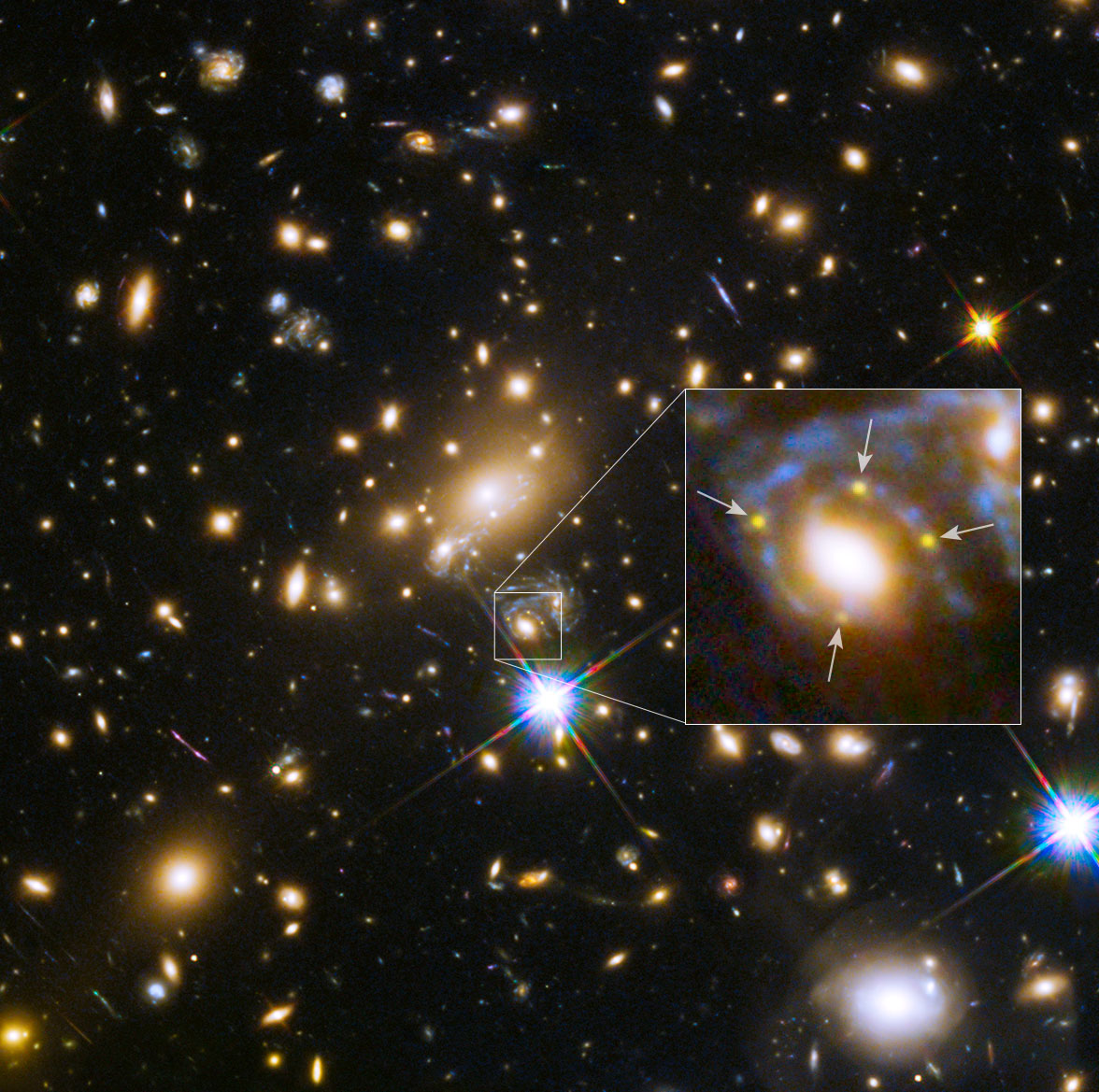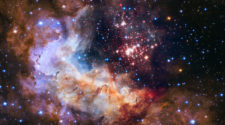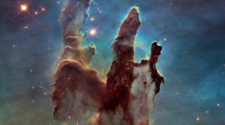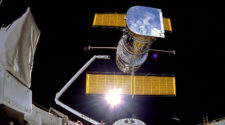
Whilst looking closely at a massive elliptical galaxy and its associated galaxy cluster MACS J1149+2223 — whose light took over 5 billion years to reach us — astronomers have spotted a strange and rare sight. The huge mass of the galaxy and the cluster is bending the light from a much more distant supernova behind them and creating four separate images of it. The light has been magnified and distorted due to gravitational lensing and as a result the images are arranged around the elliptical galaxy in a formation known as an Einstein cross.
Although astronomers have discovered dozens of multiply imaged galaxies and quasars, they have never before seen multiple images of a stellar explosion.
“It really threw me for a loop when I spotted the four images surrounding the galaxy — it was a complete surprise,” said Patrick Kelly of the University of California Berkeley, USA, a member of the Grism Lens Amplified Survey from Space (GLASS) collaboration and lead author on the supernova discovery paper. He discovered the supernova during a routine search of the GLASS team’s data, finding what the GLASS group and the Frontier Fields Supernova team have been searching for since 2013. The teams are now working together to analyse the images of the supernova, whose light took over 9 billion years to reach us.
“The supernova appears about 20 times brighter than its natural brightness,” explains the paper’s co-author Jens Hjorth from the Dark Cosmology Centre, Denmark. “This is due to the combined effects of two overlapping lenses. The massive galaxy cluster focuses the supernova light along at least three separate paths, and then when one of those light paths happens to be precisely aligned with a single elliptical galaxy within the cluster, a secondary lensing effect occurs.” The dark matter associated with the elliptical galaxy bends and refocuses the light into four more paths, generating the rare Einstein cross pattern the team observed.
This unique observation will help astronomers refine their estimates of the amount and distribution of dark matter in the lensing galaxy and cluster. There is more dark matter in the Universe than visible matter, but it is extremely elusive and is only known to exist via its gravitational effects on the visible Universe, so the lensing effects of a galaxy or galaxy cluster are a big clue to the amount of dark matter it contains.
When the four supernova images fade away as the explosion dies down, astronomers will have a rare chance to catch a rerun of the explosion. The supernova images do not arrive at the Earth at the same time because, for each image produced, the light takes a different route. Each route has a different layout of matter — both dark and visible — along its path. this causes bends in the road, and so for some routes the light takes longer to reach us than for others. Astronomers can use their model of how much dark matter is in the cluster, and where it is, to predict when the next image will appear as well as using the time delays they observe to make the mass models even more accurate.
“The four supernova images captured by Hubble appeared within a few days or weeks of each other and we found them after they had appeared,” explains Steve Rodney of Johns Hopkins University, USA, leader of the Frontier Fields Supernova team. “But we think the supernova may have appeared in a single image some 20 years ago elsewhere in the cluster field, and, even more excitingly, it is expected to reappear once more in the next one to five years — and at that time we hope to catch it in action.”
The supernova has been nicknamed Refsdal in honor of Norwegian astronomer Sjur Refsdal, who, in 1964, first proposed using time-delayed images from a lensed supernova to study the expansion of the Universe. “Astronomers have been looking to find one ever since,” said Tommaso Treu of the University of California Los Angeles, USA, the GLASS project’s principal investigator. “And now the long wait is over!”




